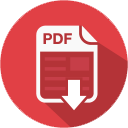After World War II the United Nations developed new international law constructs in cooperation with the majority of the world’s nations, which were mainly based on a Western hermeneutic of rights. This international humanistic project provided new anthropological constructs which were seen as compatible or non-compatible, by Muslims or non-Muslims, with Islam. When analyzing these discussions on Islam and human rights discourse into a typology they can provide insights where compatibility and non-compatibility lies, and where possible reinterpretation is needed. To move beyond this seeming dichotomy between Islam and human rights we must first determine whether a viable discourse on Islam and human rights even exists, and if so, how it approaches both Islam and human rights. Through this analysis we hope to formulate an effective strategy for a viable and thick descriptive Islam and human rights discourse. As this is only an exploratory article we cannot analyze the full existing discourse on Islam and human rights, but we only need to construct a typology descriptive enough to determine a strategy. We therefore determine the state of the discourse by analyzing works directly focused on Islam and human rights. Constructing a typology of Islam and human rights discourse is, of course, itself a thin description, but basing ourselves on several monographs on the subject might help show us how Islam and human rights are defined, measured, and by what it is represented. Islam and human rights revolve around several questions: Is a form of compatibility between Islam and modern human rights possible? If so, based on what premises or comparative material? Has a satisfactory form of compatibility been achieved yet? Have Muslims simply incorporated human rights discourse (‘Islamization of human rights’) or engaged (‘synthesis/compatibility’) with it? Another important question is that of universalism of either human rights or Islam itself, or which element of both can be called universal or not. Claiming something has a universal or relative status is by itself a claim from power, as the universal will always be used as the norm for the relative. To construct a small but coherent typology we have selected works that share a similar language and time-period: the post-9/11 English works by three Muslim authors (Baderin, Moussalli, and Sachedina) and one non-Muslim author (Mayer). By assessing the different elements of what constitutes ‘Islam(ic law)’ and ‘human rights discourse’ we can derive new understandings and strategies in how to engage with a modern Islamic human rights discourse which overcomes both apologetics and othering.
Bibliographic Information
Title: Islamic Human Rights Discourse and Hermeneutics of Continuity
Author(s): Arnold Yasin Mol
Published in: BRILL
Language: English
Length: 27 pages
Islamic Human Rights Discourse and Hermeneutics of Continuity
 Ijtihad Network Being Wise and Faithful Muslim in the Contemporary World
Ijtihad Network Being Wise and Faithful Muslim in the Contemporary World

